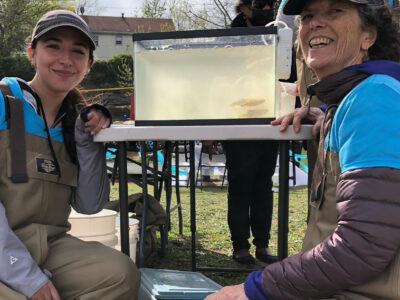Occupying only 1.5 percent of the total area of India, Punjab supplies approximately 11 percent of the country’s rice and 22 percent of its wheat. As a result, agriculture is a huge part of its economy, and the rapidly falling water table draws amplified concerns, especially since rice is a particularly water-intensive crop. For the last couple years, the Columbia Water Center has worked in conjunction with the Punjab Agricultural University to implement the use of tensiometers, used to inform irrigation practices based on soil conditions and plant requirements to reduce water usage without damaging crop yield.

So far, tensiometers have been tested in four central districts of Punjab, initially with more than 500 farmers the first year, and then peaking with an additional 4,500 farmers in 2011 before testing was scaled back. Data showed, on average, a 30 percent reduction in the water used in the test plots when compared with the standard practices employed in the control plots. In general, a large obstacle to such initiatives is a lack of financial incentive to change standard practices. However, following a recent trip to India, Tess Russo, a postdoctoral fellow at the Earth Institute, found that farmers realize the threat the falling water table poses, as well as the long-term value of preserving water now.
Russo, along with Columbia Water Center Director Upmanu Lall; Alissa Park, Lenfest junior professor in applied climate science and associate director of the Lenfest Center for Sustainable Energy; and Mingoo Seok, an assistant professor in the Electrical Engineering Department, are working with an earth and environmental engineering senior design class to develop new low-cost soil moisture and nutrient monitoring sensors. Previously, steps had been taken to make the tensiometer more affordable, and now the hope is to encourage farmers to use this product by utilizing a different technology that is convenient and suitable to their needs while keeping the price under $20. Two key drawbacks to the tensiometer model are that farmers must wade out into the rice paddy to read the sensor and that it does not provi
Colleagues of Lall and Russo at the Punjab Agricultural University have requested 50-100 of these devices by June for pilot testing in rice fields. In order to meet this deadline, efforts are currently focused on the issue of the wireless communication of soil moisture levels. However, in future stages of the project, they expect to include the nutrient monitoring and to have the base station control the pump to automate irrigation only when it is required. All of these developments are made with the aim of sustaining agricultural productivity and food security in India while reducing the impact on the environment.




the government should give more assistance to these places with agricultural progress. This is the place that supplies their food and will need a lot of support from the higher ups.